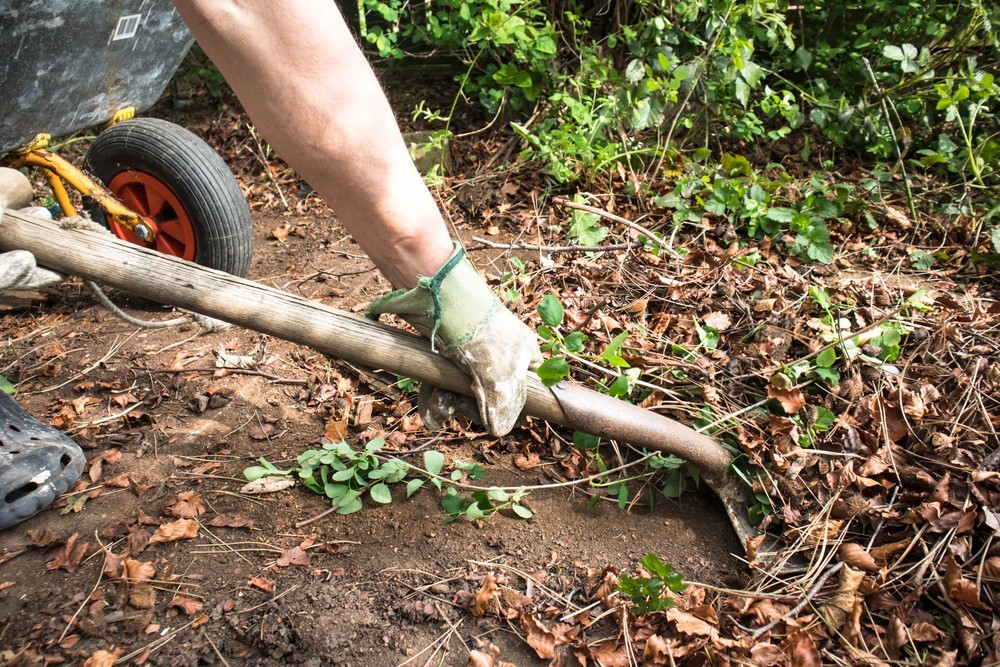Gardening can be an immensely satisfying activity, but what happens when you end up with a pile of large garden waste? Whether it’s foliage, fallen branches, or some other type of debris, getting rid of large garden waste can be a hassle. It is not only time-consuming, but also physically difficult. In this blog post, we’ll discuss everything you need to know about how to get rid of large garden waste – from defining what exactly it is. We’ll also explore some common types of garden waste and why it’s important to dispose of them properly. By the end of this post, you’ll be equipped with all the necessary knowledge to tackle your garden waste effectively and efficiently.
What is Large Garden Waste?
Large garden waste refers to the likes of tree branches, stumps, and bulky items such as old garden furniture. Fortunately, many local councils offer waste collection services for large garden waste. You can also rent a skip or hire a waste removal company to dispose of large garden waste. However, items such as tree stumps may require professional removal services due to their size and weight. Removing large garden waste can be daunting, but it is important to do it safely and responsibly to avoid accidents or damage to the environment.
Reasons to Get Rid of Garden Waste
Getting rid of garden waste is essential for maintaining a healthy garden and environment. Garden waste can cause blockages in drainage systems that lead to flooding. It can attract pests and rodents if left lying on the ground. Decomposing plant material emits unpleasant odours and gases that can be harmful to human health. Removing garden waste creates space for new plants or landscaping projects.
Moreover, proper disposal of garden waste is essential in protecting the environment by reducing landfill waste. Rather than burning or dumping it, you should consider composting or recycling your garden waste. You could also check with your local council to find out how they dispose of green waste and take help from them. So, getting rid of garden waste has both practical and environmental benefits, making it an important part of gardening maintenance.
How to Get Rid of Large Garden Waste?
Getting rid of large garden waste can be challenging, especially if you have a lot of it. Here are some tips to help you dispose of your garden waste effectively:
- Composting
Composting is one of the most eco-friendly and natural ways to dispose of large garden waste. This involves breaking down organic matter into nutrient-rich soil that can be used in your garden. To start composting, you will need a compost bin or pile that should be placed in a shaded area with good drainage. You can add a mixture of green and brown waste, such as grass clippings, leaves, and vegetable scraps, to the compost pile.
To ensure proper decomposition, turning the compost regularly is important as avoiding adding meat or dairy products that can attract pests. Composting not only helps in getting rid of large garden waste but also provides an excellent source of organic fertilizer for your garden. By following these simple steps, you can easily create a healthy and sustainable ecosystem in your backyard without harming the environment.
- Mulching
Mulching is a process that involves covering the soil surface surrounding plants with organic materials. This method helps to improve soil fertility, retain moisture, and prevent weed growth. Additionally, it can be used effectively to eliminate large garden waste such as fallen leaves, branches, and twigs. By shredding these materials and using them as mulch, you can clean up your garden and add valuable nutrients back into the soil. Mulching is an eco-friendly and cost-effective method of managing garden waste that can benefit both your plants and the environment.
- Incineration
When it comes to getting rid of large garden waste, incineration can be an effective method, especially for woody or fibrous waste that cannot be composted or recycled. This involves burning the waste at high temperatures until it turns into ash. However, incineration can have negative impacts on the environment and should only be used as a last resort.
Before considering this method, it is important to check with your local authorities to ensure that it is legal in your area. Additionally, it’s worth exploring other options, such as composting or recycling, before resorting to incineration. While this method can effectively eliminate large garden waste, it should be used sparingly and with caution.
- Hiring a professional Gardening Service
One option for removing large garden waste is hiring a professional gardening service. Doing so can save you valuable time and effort, as these services have the necessary equipment and expertise to remove and dispose of your waste safely. Additionally, professional services are often knowledgeable about environmentally friendly disposal methods.
When considering hiring a gardening service, it’s important to do your research and compare different options to find one that fits your budget and needs. Be sure to check reviews and credentials before making a decision. Ultimately, hiring a professional gardening service can be a convenient and effective solution for disposing of large garden waste.
- Recycling
Recycling is an eco-friendly and sustainable option when it comes to getting rid of large garden waste. Many cities offer green waste recycling programs that turn yard waste into compost or mulch, which can be used in various gardening applications. Homeowners can also compost their garden waste using a compost bin or pile, reducing waste and creating nutrient-rich soil for future gardening endeavours.
Recycling garden waste is not only environmentally friendly but also cost-effective as it eliminates the need for expensive disposal services. By taking advantage of recycling options, homeowners can easily dispose of their large garden waste in a way that benefits both the environment and their own gardening efforts.
What are the Most Common Types of Garden Waste?
Gardening is a great way to spend time outdoors and has numerous benefits. However, it generates garden waste that needs to be disposed of properly. The most common types of garden waste include green waste such as grass clippings, leaves, branches, and other organic materials. Soil and rubble like rocks, stones, bricks, and soil also make up a significant portion of garden waste. Old or broken garden furniture like chairs or tables can also contribute to the pile of garden waste. Besides these, plastic waste from used plant pots or bags and hazardous waste like pesticides and fertilizers are common types requiring special disposal methods. Knowing the different types of garden waste can help you decide the most appropriate way to dispose of them safely without harming the environment.
Conclusion
To maintain the beauty of your garden, it’s crucial to get rid of large garden waste. Whether you have old branches, fallen leaves, or unwanted plants, there are several ways to dispose of them sustainably. You can compost them, mulch them, or even incinerate them safely. If you’re not confident about handling large garden waste, hire a professional gardening service to help you out. Remember, disposing of garden waste responsibly is essential for preserving the environment and keeping your surroundings clean.













